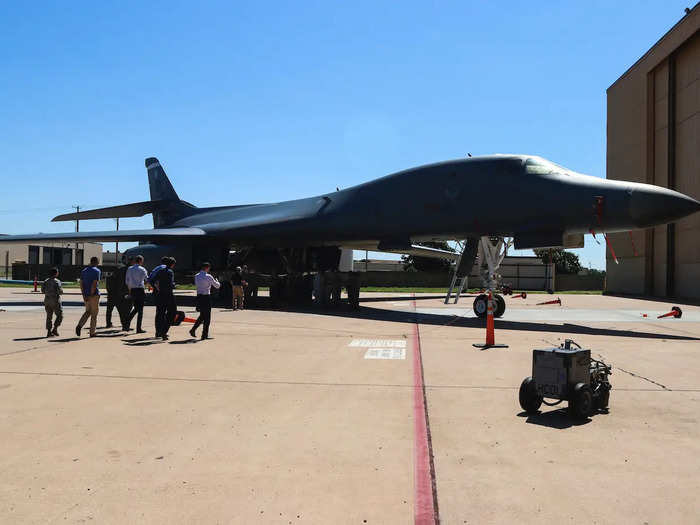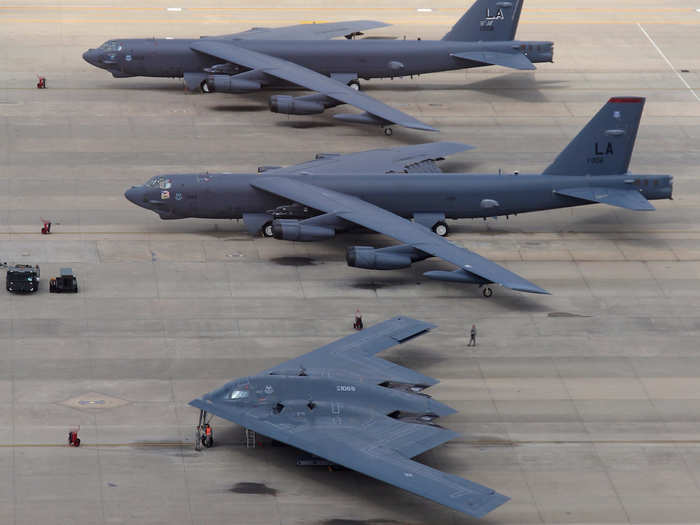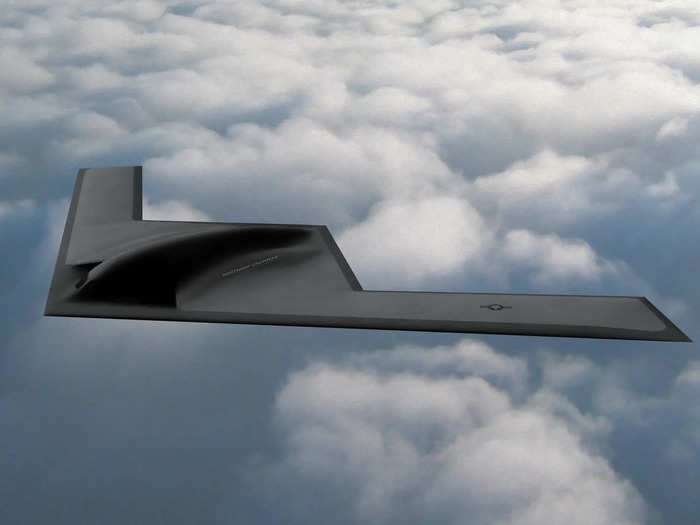- Home
- slideshows
- miscellaneous
- The US Air Force is studying 2 bases to see which is best to handle the new B-21 bomber
The US Air Force is studying 2 bases to see which is best to handle the new B-21 bomber
Ellsworth Air Force Base.

Dyess Air Force Base.

Dyess trains all Air Force B-1 bomber crews and is often called the "Home of the B-1."
The base's host unit is the 7th Bomb Wing, which is also assigned to the 8th Air Force under Air Force Global Strike Command.
Within the wing is the 7th Operations Group, the Air Force's largest B-1B operations group, with 36 B-1 bombers and more than 1,100 personnel assigned to its four squadrons.
The 317th Airlift Wing, assigned to the 18th Air Force under Air Mobility Command, is also stationed at Dyess. Flying the C-130J, the newest generation of the C-130 Hercules, it mainly does the tactical part of the airlift mission, dropping troops and equipment into hostile areas.
Powder River Training Complex would also be the primary training area for bombers based at Dyess, but the Texas base would use airspace in the Brownwood and Lancer military operating areas in Texas and the Pecos military operating area in Texas and New Mexico.
Out with the new, in with the old.

The first B-21s are slated to arrive in the mid-2020s. As they enter the fleet, the Air Force will start divesting its B-1B Lancers and B-2A Spirit bombers.
Shedding the Lancers and the Spirits will take some time and will leave the Air Force with its newest bomber, the Raider, and its oldest, the B-52H Stratofortress, which was introduced in the 1950s.
What it has in years, however, the B-52 makes up in lack of mileage.
"Many of these airplanes sat out on nuclear alert during the Cold War and had relatively low hours on them in comparison" to other bombers, Lt. Gen. David Nahom, Air Force deputy chief of staff for plans and programs, told the House Armed Services Committee in February.
"If you look at what we need a bomber to do, and what we can do with a B-52 with the Civilian Engine Replacement Program, as well as the new radar and some of the new digital backbone, we're going to be able to do things with that airplane that we would not be able to do with a B-1 and B-2," Nahom added.
"The future of the bomber force for the Air Force is in a B-21 and a heavily modified B-52," he said.
The Air Force wants to part with the B-1 and the B-2 so it can use resources elsewhere.

The Air Force has just 20 B-2s in active service, the least of any strategic bomber, but the Spirit also has capabilities the Air Force needs until it gets the B-21 up and running — namely, "its ability to penetrate as well as its nuclear strategic deterrence mission," Nahom said.
The Spirit is the Air Force's only stealth nuclear-capable bomber.
The B-1B remains valuable because of its "pure volume of fires," Nahom said, referring to its considerable payload. But the service is proposing to mothball 17 of the least reliable Lancers in its next budget, leaving 44 in active service.
"One of the problems with the B-1 is we've used that airplane and overused it over many years, and it's broken it in many ways," Nahom said last month. The Lancer has been a workhorse in the global war on terror.
The B-1's age, low mission-capable rates, and the time and resources needed to keep it flying led the Air Force to believe some could go, Nahom said, "so we can use the same number of maintainers to concentrate on the airplanes that are ... more efficient to recover to a flying status."
"By taking the fleet down by 17 airplanes, that takes the worst actors offline and lets the maintainers concentrate on the airplanes that have a better road to recovery," Nahom added.
With years to go before the B-21 is working, however, the service is also making transition plans.

Nahom admitted that there was "a little bit of unknown" in the B-21's future.
The B-21 is "on track and doing very well, but there will be some challenges going forward," he said, assuring lawmakers that there will be some overlap in the transition.
"The first B-21 goes into the first site, there will be a transition period where that base will bring down their B-1s and will bring in their B-21s," Nahom said. "That will go base to base, so you'll have the first base [starting] somewhere [in the] mid-[2020s] to '26-'27 timeframe when the first aircraft show up, after that transition, then you go to the next base and then the next base."
Asked if delays on the B-21 would require spending more money on the B-1B in the future, Nahom said the Air Force was investing in the remaining Lancers now.
"The 44 airplanes that are left, we are investing and making sure that they have the airframe and the avionics that they need to carry that long-range strike through the '20s," Nahom said. "We're going to have to do that."
Popular Right Now
Popular Keywords
Advertisement